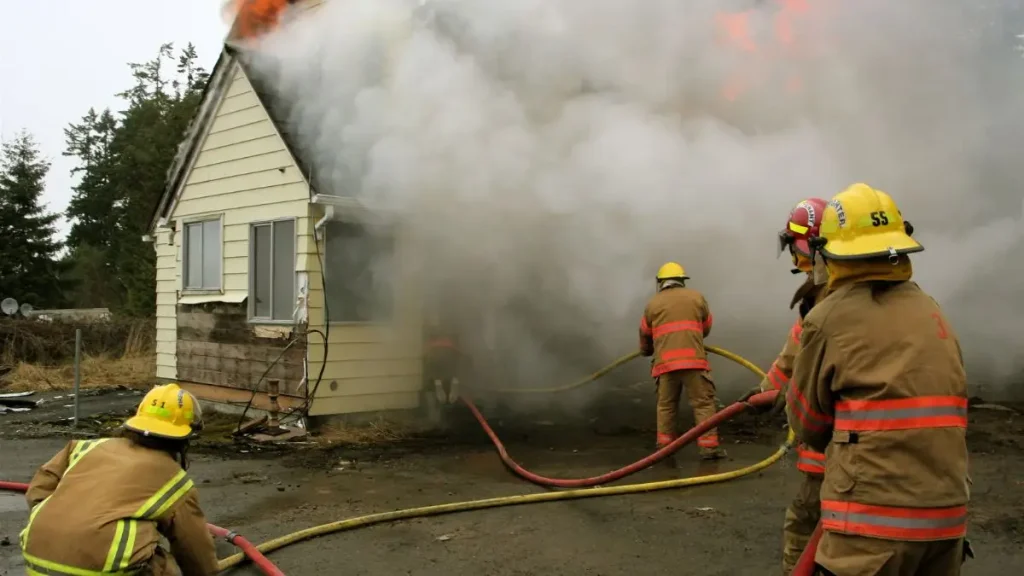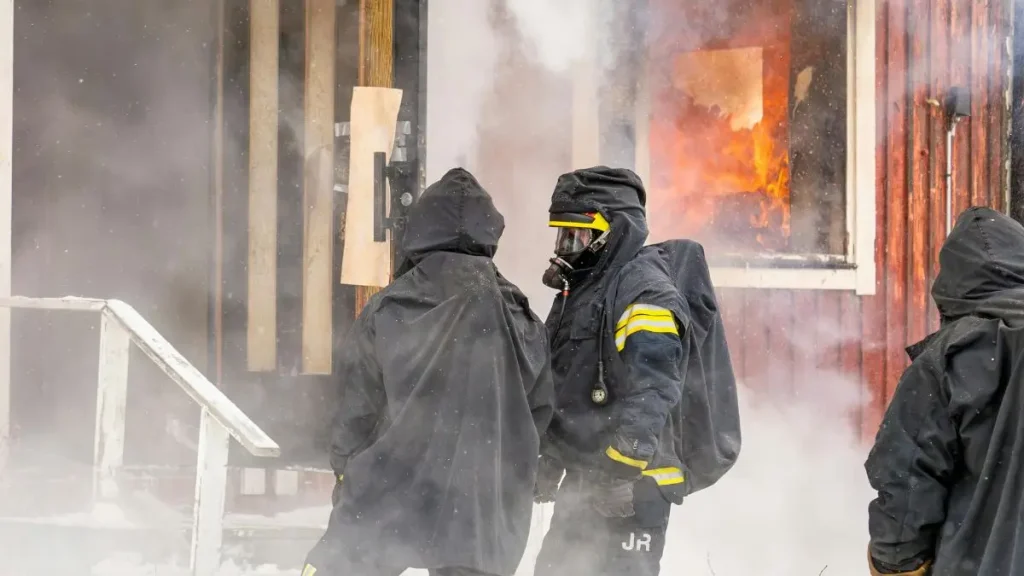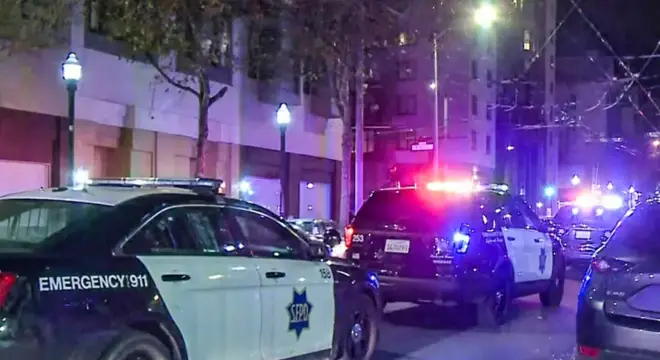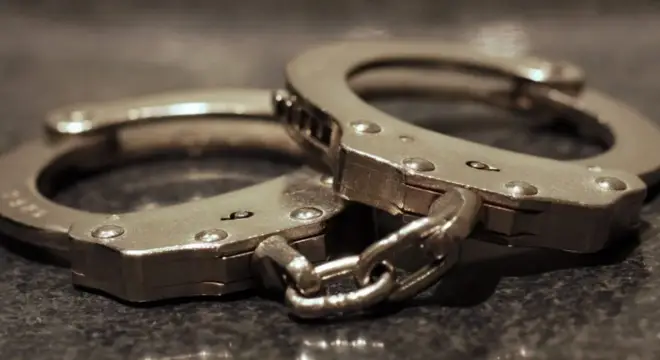Detroit Firefighter Hospitalized After Battling House Fire
I remember reading the early reports, and honestly, it hit me how fast things can go wrong in a matter of minutes. On Thursday morning, around 5:20 a.m., firefighters in Detroit were called to a house fire on the 14200 block of Corbett Avenue. I can only imagine the tension as crews raced through the quiet streets, knowing every second counts.
Within six minutes of receiving the call, the first units arrived on scene. Flames were already visible from the back of the house, stretching across the first and second floors. What made the situation even trickier was that the house appeared vacant, which often means hidden hazards—weak floors, unstable structures, and unpredictable fire behavior.
By 6:45 a.m., crews had the fire under control, but not before a firefighter fell through the first-floor level into the basement while trying to contain the blaze. He was rescued quickly and taken to the hospital with burns and minor injuries. Reading about it, I felt a mix of relief and concern—relief that he survived, and concern for anyone stepping into situations like this.
This section matters because it doesn’t just give you the timeline—it lets you feel the urgency and danger firefighters face every day. It sets the stage for understanding why safety protocols, training, and community awareness are so critical.
How the Firefighter Was Injured?

I read the details on Detroit News, and I couldn’t shake how sudden and dangerous this situation was. The firefighter went inside the house while the flames were still spreading across the first and second floors. Without warning, the floor beneath him gave way, and he fell straight into the basement.
It’s one of those moments that makes you realize how unpredictable fires can be. Even a trained firefighter, fully aware of the dangers, can encounter hazards that are impossible to anticipate. He was rescued quickly by his fellow crew members and transported to the hospital with burns and minor injuries. I can’t imagine the fear in those first seconds, and then the relief when his team got him out safely.
Uncontrolled hazards, like the tragic home explosion in Delaware where one person died underline how property conditions and unexpected factors can dramatically increase danger.
Reading this, I also thought about the physical and mental demands of firefighting. You’re running toward flames while your body and instincts scream to get out, and every step could be onto a weak floor, a hidden hole, or burning debris. The bravery is obvious, but so is the constant risk.
Investigating the Cause
According to Fox2 Detroit, the house where the firefighter was injured appeared vacant. Vacant homes are a nightmare for fire crews because they often have structural issues, outdated wiring, or hidden hazards that make fires unpredictable. Investigators are still determining exactly how this fire started, but the risks inside an abandoned property are clear.
When you think about it, fires like this aren’t just about the flames. The environment itself becomes a trap. Floors can collapse, ceilings can fall, and smoke can make it impossible to see the danger until it’s too late.
Firefighters have to make split-second decisions in spaces that might already be unstable, and that uncertainty is terrifying—even for the most experienced crew.
There are multiple examples across the state, including the Jefferson County house fire that injured a resident, showing that residential fires can quickly escalate and pose serious risks.
I also noticed that vacant homes are a recurring theme in many city fires. They’re not just abandoned buildings—they’re ticking time bombs. This raises bigger questions for the community:
How are these properties monitored? Could inspections or security measures prevent injuries? Reading about this makes you appreciate how much firefighters are putting on the line in spaces most of us would never dare enter.
Past Firefighter Injuries in Metro Detroit
This incident isn’t isolated. Just last month, a firefighter was injured on Detroit’s west side while responding to a house fire, and tragically, a deceased man was found inside. In August, two Macomb Township firefighters ended up in the hospital after a house fire on Balmoral Drive.
And back in June, a firefighter suffered a non-life-threatening injury at an industrial facility on the east side of Detroit.
Looking at these events together, you start to see a pattern. Firefighters in Metro Detroit are repeatedly facing high-risk situations, and while we hear the headlines, it’s easy to miss the human story behind them.
Every injury represents a split-second life-and-death decision, and every fire tells a story about the hidden dangers in our neighborhoods.
Similar to incidents like the early-morning blaze in Peru, Michigan, where a garage was completely destroyed firefighters often face unpredictable hazards even in seemingly small fires.
I found myself thinking about how the community perceives these risks. Many people see firefighters as heroes—which they are—but understanding the recurring dangers gives you a deeper appreciation for the skill, training, and sheer courage it takes to enter these fires day after day.
Firefighter Safety Protocols & Precautions

So how do firefighters stay safe in situations like this? It’s not luck. There are strict protocols, starting with protective gear designed to withstand heat and debris. Crews operate in teams, with rapid intervention units ready to respond if someone goes down.
Mayday calls can bring immediate support, and constant communication ensures everyone knows their location inside a burning structure.
After each incident, departments review what happened. They analyze the fire, the building, and the decisions made, looking for ways to improve safety. That could mean updating training for vacant homes, reinforcing gear, or even changing the way floors are checked before entering. Every near-miss becomes a lesson, and every injury becomes a reason to improve protocols.
Reading about this, I realized how much thought goes into protecting firefighters. The gear, the drills, the procedures—they’re all life-saving measures that often go unnoticed by the public. And yet, even with all these precautions, danger is always present.
That’s the reality of the job: calculated risk, constant vigilance, and the understanding that a momentary misstep can have serious consequences.
Community Impact and Awareness
Fires like the one on Corbett Avenue affect more than just firefighters—they ripple through the neighborhood. People rally around the injured, sending messages of support and checking in with the department. It’s a reminder that these incidents touch everyone, not just those directly involved.
Beyond the emotional response, these events often spark conversations about fire safety. Residents are prompted to check smoke alarms, inspect their homes for hazards, and report abandoned properties before they become dangerous.
For someone reading this, it’s an opportunity to take small, actionable steps that can prevent tragedies in your own community.
I can also see how these incidents affect local morale. Firefighters risk their lives, neighbors worry, and the city confronts the ongoing challenges of vacant buildings and older infrastructure.
Awareness becomes more than just knowledge—it becomes a responsibility. And knowing this, it’s hard not to feel a mix of respect for the responders and a sense of urgency to do your part to prevent future fires.
If you want to stay updated on fire incidents and safety tips in real time, there’s a WhatsApp channel sharing alerts and updates straight to your phone—it’s a handy way to stay informed about local emergencies and safety measures.
Preventive Recommendations
Reading about this fire, I couldn’t help but think about what could be done to reduce these kinds of injuries in the future. One of the biggest issues is vacant or poorly maintained properties. Regular inspections and maintenance can prevent structural collapses that put firefighters at risk. It might seem like bureaucracy, but those check-ups save lives.
Fire safety education is another critical piece. Simple measures—like having working smoke alarms, creating escape plans, and educating neighbors about fire hazards—make a big difference. If you own or manage a property, checking wiring, keeping exits clear, and removing flammable debris isn’t just responsible—it’s essential.
I also think communities can help by reporting abandoned homes or unsafe buildings. Firefighters often walk into situations that could have been prevented if hazards were addressed earlier. When you participate, even in small ways, you’re helping protect those who risk their lives to protect everyone else.
Wrap-Up and Key Takeaways
The firefighter injured on Corbett Avenue reminds us just how unpredictable fires can be. From rapid response times to split-second decisions inside a burning house, every moment is critical. And while he survived with minor injuries, the incident highlights ongoing challenges for Metro Detroit’s fire crews.
It also reminds us that fire safety isn’t just a firefighter problem—it’s a community responsibility. Checking your own home, reporting hazards, and supporting local fire safety initiatives can make a tangible difference.
So here’s my question to you: the next time you walk past a vacant property or notice a fire hazard, what will you do differently? Every small action counts, and staying alert could help prevent the next injury—or worse.
To learn more about similar incidents and tips on home fire safety, check out our full coverage of recent house fires across the U.S. on our website Build Like New.
Disclaimer: The information in this article is based on available local reports and official statements. Details may change as investigations continue. This article is for informational purposes and should not be taken as legal or professional advice.


